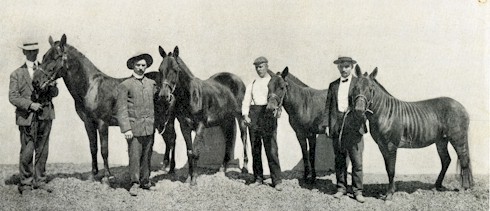
Agricultural History Series |
Missouri State University |
1904 St. Louis World's Fair
The Zebrulas
One of the reasons that people went to the World's Fair was to get new ideas. Some ideas were good and caught on, others didn't.
On the Pike, the Hagenback animal show was one of the big attractions. Fair visitors had the opportunity to see animals that they had only read about before. In the instance of the Zebrulas, most fair visitors had probably never seen nor heard of such a thing. A series called The Forest City: St. Louis 1904 gave the following description of them.
Noah's Ark, have been seen at the Universal Exposition of 1904. When the Horse Show resolved itself into the announcement of the Premier Championship winners there were sixteen breeds thus distinguished by the purple rosette, the emblem of highest honor. Equine development was classified in Standard Trotter, Thoroughbred, French Coach, German Coach, English Coach, Hackney, Morgan, Saddle, Shetland Pony, Percheron, French Draft, Clydesdale, Shire, Belgian Draft, Suffolk Punch and Jacks and Jennets. There were other breeds but not so clearly defined and not so well established as to be recognized in this high classification. Into the arena were led the stocky, docile striped Zebrulas, latest products in the evolution of the horse. Zebrulas are the progeny of the Indian pony stallion and the female zebra. They inherit the endurance of both sire and dam. For them is claimed the capacity to render more service than the mule and that with less food and drink. The Hagenbecks, in their experiments at cross breeding, originated this animal. Whether the Zebrulas can reproduce is yet to be determined. To the thousands of horsemen assembled the Zebrulas were more than curiosities. They suggested the possible successor of the mule. It was only a suggestion. Beside the Missouri mule Zebrulas were dwarfs.

The Zebrulas
Although the Zebrula apparently never were shown in competition in the Livestock Forum during the fair, they were at least paraded and probably got a lot of attention.
Reference: No. 25 in a series called The Forest City: St. Louis 1904.
Thanks to The Museum of Ephemerata -
Curator, Scott Webel, for sharing this information.
This page was designed and is maintained by Lyndon Irwin.